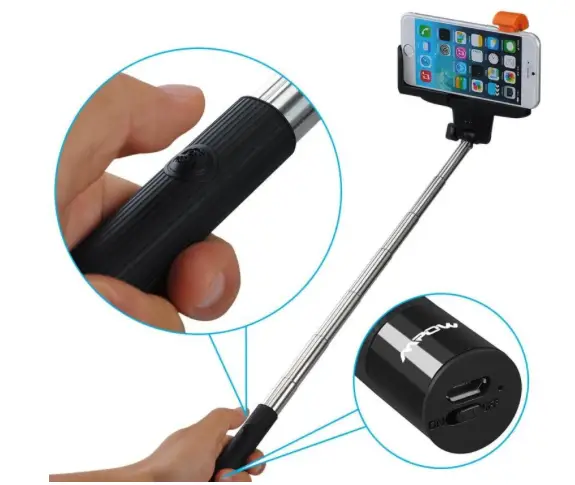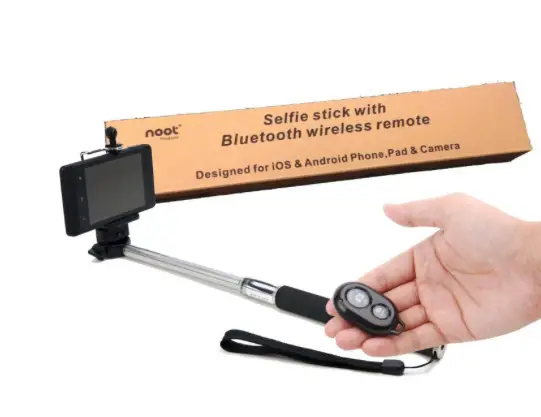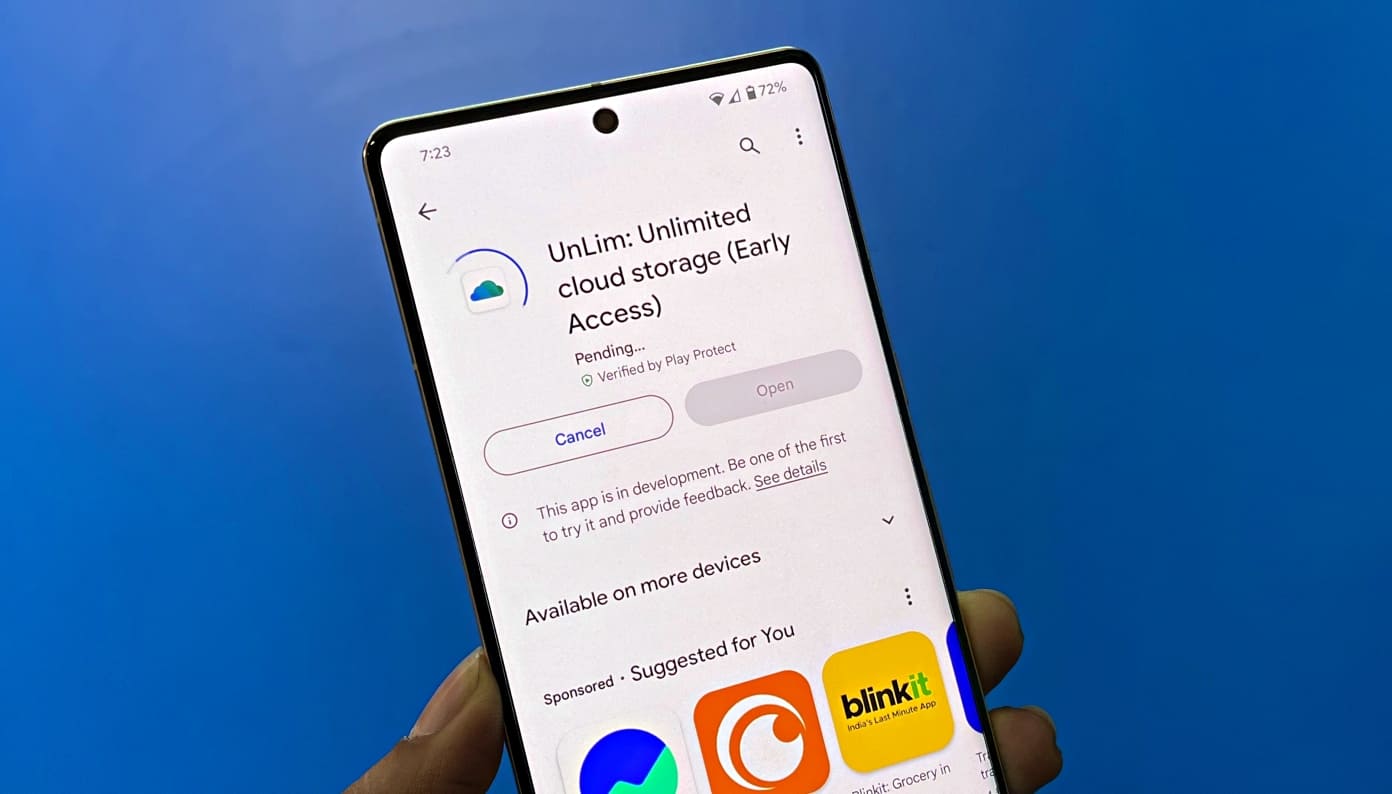Selfies are all the rage right now and seeing how industries like staying on par with latest trends, the market is flooded with selfie sticks all over. We wrote a post listing out the 5 Best Selfie Sticks in India, not so long ago and today, we help you choose which type of selfie stick is the best for you.
Selfie sticks broadly work in the same fashion – they serve as an extension from your body to get a wider field of view, provide a way to clamp on to your phone and give you a shutter to snap your picture. We are going to distinguish these products based on that last variable, since you will be surprised how much of a difference a change of implementation of the shutter button can make. Let’s head right in.
[stbpro id=”grey”]( Also See: 5 Best Phone Camera Accessories For Selfie Lovers )[/stbpro]
Wireless, built-in shutters
To be clear, when we refer to ‘shutters’, we mean the shutter button that is used to click the picture on your phone. Wireless built-in implementations deploy a shutter button right into the handle of your selfie stick. So, whenever you are done adjusting yourself and your group into the frame, a simple pressing of your thumb allows you to click a picture.
Notably, this implementation pairs the stick with your phone and uses Bluetooth(powered by an embedded battery) to remotely click the shutter on your phone. This means, obviously, that you will have to charge your selfie stick from time to time- an added pain if you’re already charging a ton of gadgets.
While selfie sticks with built-in shutters remain the most popular ones today, it does provide you with limitations, wherein the stick’s length dictates how wide your field of view can be(longer length results in wider angles, that is). If you are a casual user who doesn’t mind charging another gadget from time to time, this variant is your best solution. This implementation also provides you with the highest amount of variety to choose from. eg: GoPro offers a selfie stick that floats in water.
Pros:
- Huge variety in length and sizes available
Cons:
- Yet another battery that need charging
- Cheaper models might have spotty Bluetooth connection
- Persistent Bluetooth connection drains your phone’s battery
Who is it for:
The casual user who wants a lot of variety during the initial purchase and doesn’t mind charging another gadget.
Wireless, remote shutters
Building upon the previous variant, selfie sticks with wireless remote shutters gather a specific audience. Here, there is an external portable clicker that includes the shutter button on it. This means, you’re no longer confined by the length of the selfie stick to click pictures and this isn’t oblivious to manufacturers since you can easily find tripod like ‘selfie sticks’ in this space. Basically, you setup the phone and the stick/tripod wherever you want it to be and go back to take your shot. Once you’re ready, click the shutter to capture your shot.
The best use-case for this type of selfie stick is someone who really takes their selfies seriously or someone who is out on a trip to a picturesque location where a wide field of view is a must. Setting up the stick as a tripod opens up a world of possibilities. However, the issue of charging the battery still persists.
Pros:
- Length of the stick isn’t a limitation
- Wider field of view
Cons:
- Can be comparatively expensive
- Batteries still need to be charged
- Cheaper models might have spotty Bluetooth connection
- Persistent Bluetooth connection drains your phone’s battery
Who is it for:
People who take selfies seriously or are going out on a trip.
Wired shutters
The most basic of the lot, these are basically the first variant without the need of Bluetooth; which further implies no batteries to be recharged either. These sticks typically use your phone’s 3.5mm headset jack, for ubiquity, to connect to your phone. The shutter resides on the handle of the stick and a cable extends out from the clamp-end of the stick to connect to your phone. The USP of this selfie stick is its low cost.
Pros:
- No charging battery
- Stable connections since it uses a wired implementation
- High value for money
Cons:
- Limited by the length of the stick
- Cables my get tangled or caught in an object in the vicinity
Who is it for:
A casual user who is on a budget
Conclusion:
With a growing market, companies see flourishing returns on selfie sticks and continue to provide us, the consumers, with a wide variety of products to choose from; may we suggest looking at some Selfie Flash for Phone, for upping your selfie qualities as a further read. Let us know which one is your pick.






